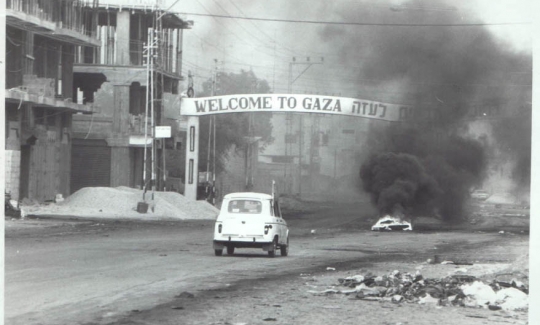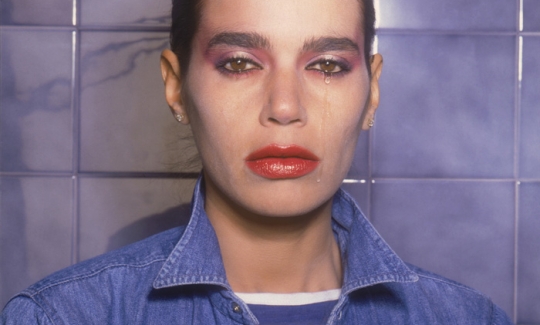Curator: Ilana Tenenbaum
This exhibition is concerned with the postmodern trends that characterized art in Israel during the 1980s - a period of political, social and intellectual change. These strategies are evident in the works created by members of the generation that came of age during the 1970s, as well as in the works of artists who began exhibiting during the 1980s. The new critical art that came into being during this decade was the product of an encounter between global and local changes, as well as between conceptual, modern art and the new postmodern language that began to influence artists in Israel during this time. All of these were given expression both in terms of the disruption of the distinct identity of Israeli art, and in terms of a demonstrative concern with its ideological subject matter.
The late 1970s in Israel were characterized by a sense of crisis: a dramatic political and social change led to the rise of new conceptions, based on post-Zionist and postcolonialist ideas. The dissolution of the Israeli sense of collectivism, and the shifting boundaries between the public and private spheres, led to the formation of a new politics of identity. These ideas were also reflected in art, and were given expression through the emergence of new themes, which ripened and became more dominant later on: a preoccupation with ethnic, national (The Voice of the "Other"), sexual and gender identity; a heightened awareness of the power of the media; a growing preoccupation with refugees, immigration and the relationship between the first and third worlds; and an exploration of the less heroic aspects of the Holocaust by "second generation" artists (The Holocaust and Israeli Identity). Political art turned a critical gaze upon the state and the fields of power in which it operates, and responded to central political events during this decade - such as the war in Lebanon and the first Intifada (The Israeli-Palestinian Conflict).
The 1980s were also characterized by self-administered artistic organizations and associations - groups and galleries whose members functioned as each other's exhibition space owners, exhibitors, curators and audience. These different groups, new galleries and new art school offered a multi-vocal alternative to the artistic establishment.
The exhibition is constructed along two main axes - a thematic one and a formal one. The thematic axis addresses the new discursive subjects that took center stage in the art of this period: the meaning of "home" as a carrier of the imprint of history; new attitudes towards the state, borders, time and memory; and a concern with identity and gender. This new discourse was also reflected through a variety of expressive means. The exhibition's formal axis is thus concerned with the breaking down of boundaries between different mediums, and with hybrid works (A Language of Hybrids) that undermine the traditional status of the art object; the transition from conceptual images to narrative, allegorical and theatrical images that blur the line between reality and fiction; the growing use of quotations from familiar art historical images; the changing status of photography; and with the "return to painting," and the related emphasis on sensuality, materiality and bold colors.


